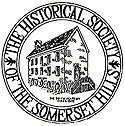Known also as the original Basking Ridge Classical School, the 1809 Federal-style Brick Academy located in the center of the Basking Ridge section of Bernards Township has been a boys’ private preparatory school, a public school, a meeting hall for several fraternal and benevolent organizations, and the Bernards Township municipal building.
The Brick Academy is known also as the original Basking Ridge Classical School, the 1809 Federal-style Brick Academy located in the center of the Basking Ridge section of Bernards Township. The structure has also served as a boys’ private preparatory school, a public school, a meeting hall for several fraternal and benevolent organizations, the Bernards Township Police Department, and the Bernards Township municipal building.
It currently serves as the headquarters of The Historical Society of the Somerset Hills, as well as a schoolhouse and museum to local history.
In 1976 the Brick Academy was leased by the Township to The Historical Society of the Somerset Hills, which uses the Brick Academy for its headquarters and public meetings, and operates a museum, a one room schoolhouse, and research library.
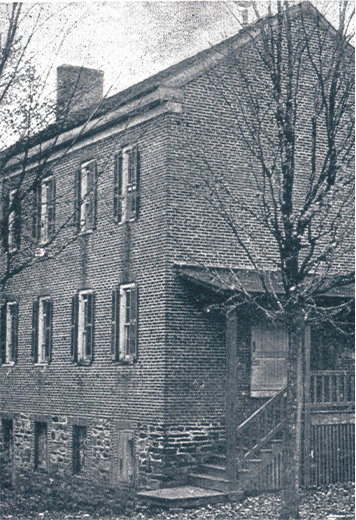
Early Schooling in Basking Ridge
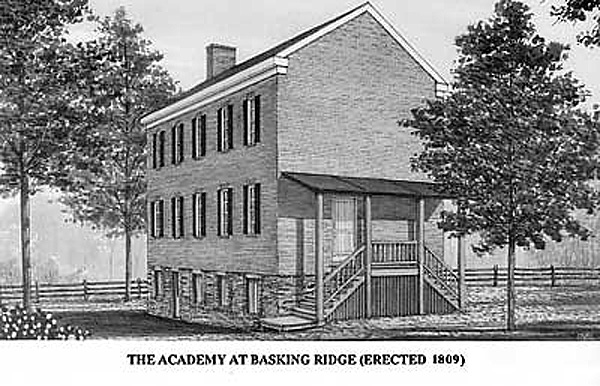
In the beginning, Dr. Samuel Kennedy, fourth pastor of the Basking Ridge Presbyterian Church, founded a classical school sometime after he became minister in 1751 in which to educate young men desirous of entering the ministry, law, education, or public service. The school was originally conducted at the parsonage farm located near the church. Around 1762 Kennedy moved the school to a farmstead he purchased four miles south of the village (now known as the Kennedy-Martin-Stelle Farmstead). Several years later Kennedy moved back to the village where he continued to conduct the school until his death in 1787.
In 1795, Kennedy’s successor, Dr. Robert Finley, re-established the private academy, known as the Basking Ridge Classical School, conducting classes first at the Presbyterian parsonage and then in a new frame school building erected near the church. In 1809, with enrollment expanding, Finley organized financing and construction of a new two-story brick building prominently located in the center of the village.
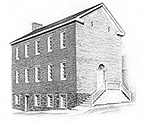
Here local boys as well as boys from New York City and other parts of the East coast were given a classical education and prepared for the College of New Jersey (later renamed Princeton University). Students boarded with local residents, and two buildings still standing near the Brick Academy were used as dormitories. Some of the distinguished graduates included:
- Samuel L. Southard, Governor of New Jersey, Chief Justice of the NJ Supreme Court and United States Senator
- Theodore Frelinghuysen, United States Senator, Whig candidate for Vice President in 1844, and president of Rutgers College
- William Lewis Dayton, United States Senator, Republican candidate for Vice President in 1856, and Minister to France during the Civil War
- Commodore Robert Field Stockton, hero of the Mexican War
The school closed in 1851 and in 1853 was converted into a public school by the newly formed Basking Ridge School District #12. In 1903 classes were moved to the new Maple Avenue School and the following year the building was sold to a fraternal organization which permitted Bernards Township to rent space for public meetings.
Possible Design Changes in 1900
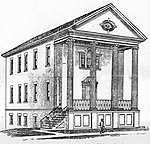
In June 1900, in response to increasing calls to improve local schools, Samuel S. Childs, President of the Board of Education, submitted a plan to remodel the Brick Academy – then known as the Basking Ridge School – prepared by New York architect John Corley Westervelt, who designed for the Childs restaurant chain. A drawing of his “proposed improvement” to the building shows a new classic temple front with raised porch and elaborate details including two story fluted columns with Ionic capitals, broken scroll pediment over the door, and a Palladian window. No details of proposed classroom im-provements were given.
The grandiose plan was rejected and the familiar old land-mark was preserved. Three years later, the Board of Education built the Maple Avenue School to replace the Basking Ridge School, which in 1904 was auctioned off to the Ancient Order of United Workmen, a fraternal lodge.
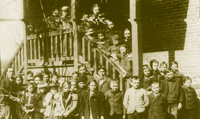
Beginning in 1924 the Township rented space for its municipal offices, courtroom facilities and police department.
In 1948 the Township purchased the building and continued to use it until 1975, when township activities were moved to the current municipal complex on Collyer Lane.



